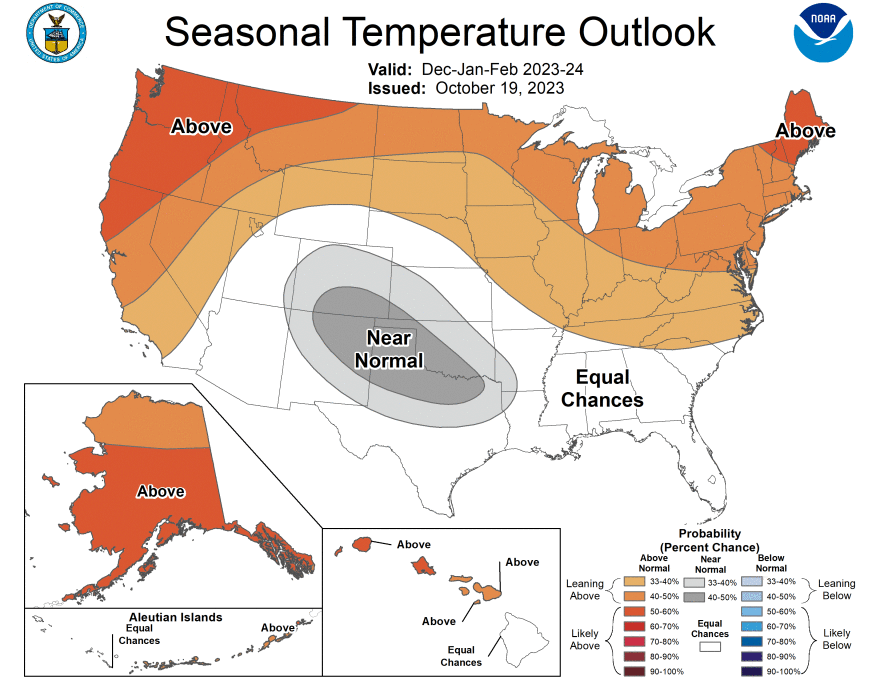Federal climate scientists say a strengthening El Niño in the Pacific Ocean is expected to bring a warmer, wetter winter to North Carolina.
Those predictions came during the winter climate outlook from scientists with the National Oceanic and Atmospheric Administration, or NOAA. The U.S. has seen above-normal and even record average temperatures so far this year as the planet warms.
"Climate change, obviously, is working in the background and winter is one of the fastest warming seasons for many places across the country. But there are also other factors within the season like El Nino, that also can play an impact," NOAA climate scientist Tom Di Liberto said during a briefing with reporters. "The forecasters, obviously, are taking all of this into account when they make their forecasts."
El Niño occurs when the ocean surface warms in the tropical Pacific. It's expected to push winter temperatures above normal in the northern tier of the country, including North Carolina. And it could mean above-average precipitation in the Southeast.
Jon Gottschalck of NOAA's Climate Prediction Center said unusually warm ocean temperatures off the U.S. coast will also affect temperatures this winter.
"Both oceans … the North Atlantic and the North Pacific, have been running above normal for most of the year, across mainly most of the coverage of both those basins, and of course near Alaska, where sea ice is trending less and less, freezing later and later in the year," Gottschalck said. "And so basically, all that warmer water and warmer temperatures generally tend to produce overall warmer temperatures across much of the continental areas."
But what about snow? Last year parts of North Carolina saw little or no white stuff. A wetter winter could make it more likely if temperatures dip, though NOAA says snowfall can't be accurately predicted more than a week in advance. Gottschalck said there is a slight chance of above-normal snowfall in the southern Appalachian Mountains.
Meanwhile, the scientists said the wetter winter will improve the dry or drought conditions across much of the Southeast, including the western Carolinas.
See the full NOAA winter outlook at https://www.noaa.gov/.
And if you don't want to take the scientists' words for it, you can see what the woolly worms are saying about winter. The annual Woolly Worm Festival is Saturday and Sunday at Banner Elk in the North Carolina mountains.









